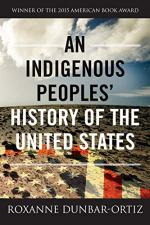
|
| Name: _________________________ | Period: ___________________ |
This test consists of 5 multiple choice questions, 5 short answer questions, and 10 short essay questions.
Multiple Choice Questions
1. John Smith convinced Powhatan leaders to feed and clothe English settlers. How did he achieve this?
(a) He promised that the English government would repay Natives.
(b) He traded gold and silver in exchange for Native help.
(c) He threatened to kill all Native women and children.
(d) He claimed that the Native people had a spiritual duty of offer help.
2. What Christian denomination did most Calvinists belong to?
(a) Lutherenism.
(b) Presbyterianism.
(c) Methodism.
(d) Catholicism.
3. What was the outcome of the Treaty of Paris?
(a) France claimed Canada and all western territories within the Americans.
(b) Britain ceded Canada and territory west of the Mississippi to the French.
(c) Britain reclaimed all territories within the Americas from France and Spain.
(d) France ceded Canada and the territory east of the Mississippi to the British.
4. According to Dunbar Ortiz, white supremacy became an integral part of which religion's ideology?
(a) Protestantism.
(b) Judaism.
(c) Islam.
(d) Catholicism.
5. What was the name of the first governing document of Plymouth Colony?
(a) The Bill of Rights.
(b) The Federalist Papers.
(c) The Mayflower Compact.
(d) The Declaration of Independence.
Short Answer Questions
1. According to the Dunbar-Ortiz, where did the concept of white supremacy originate?
2. Prior to the Colonial era, how many Native people inhabited the region that is now part of the U.S.?
3. According to the Dunbar-Ortiz, which population was the first to be forcibly organized and exploited by European aristocracy?
4. What term, designed to "diffuse the locus of guilt" (4), does Bernard Sheehan use to describe Native-Euro-American relations?
5. What term does Dunbar-Ortiz use for the specific type of colonialism used to form the United States?
Short Essay Questions
1. In Chapter 2, Dunbar-Ortiz speaks of "domestic crusades" that took place in Europe during the Crusades in the Arab world. What was the purpose of these domestic crusades?
2. Dunbar-Ortiz discusses methods of warfare used by the U.S. military to destroy the enemy's will to resist. What does this type of "irregular warfare" typically involve?
3. What was the Latin term for the papal law describing the "cleanliness of blood," or racial purity?
4. What beliefs were espoused by John Calvin?
5. Native communities who tried to ally themselves with settlers often broke off alliance after a while. Why did these ruptures occur?
6. According to Dunbar-Ortiz, what was the economic impact of the Crusades?
7. How did the bounty on scalp-hunting threaten Native communities?
8. What were three branches of government practiced within the Seminole and Muskogee nations?
9. The Mayans practiced forced labor, often making servants of war prisoners and criminals. How did this practice differ from chattel slavery within the U.S.?
10. Why did settlers try to recruit Native people as rangers?
|
This section contains 677 words (approx. 3 pages at 300 words per page) |

|




